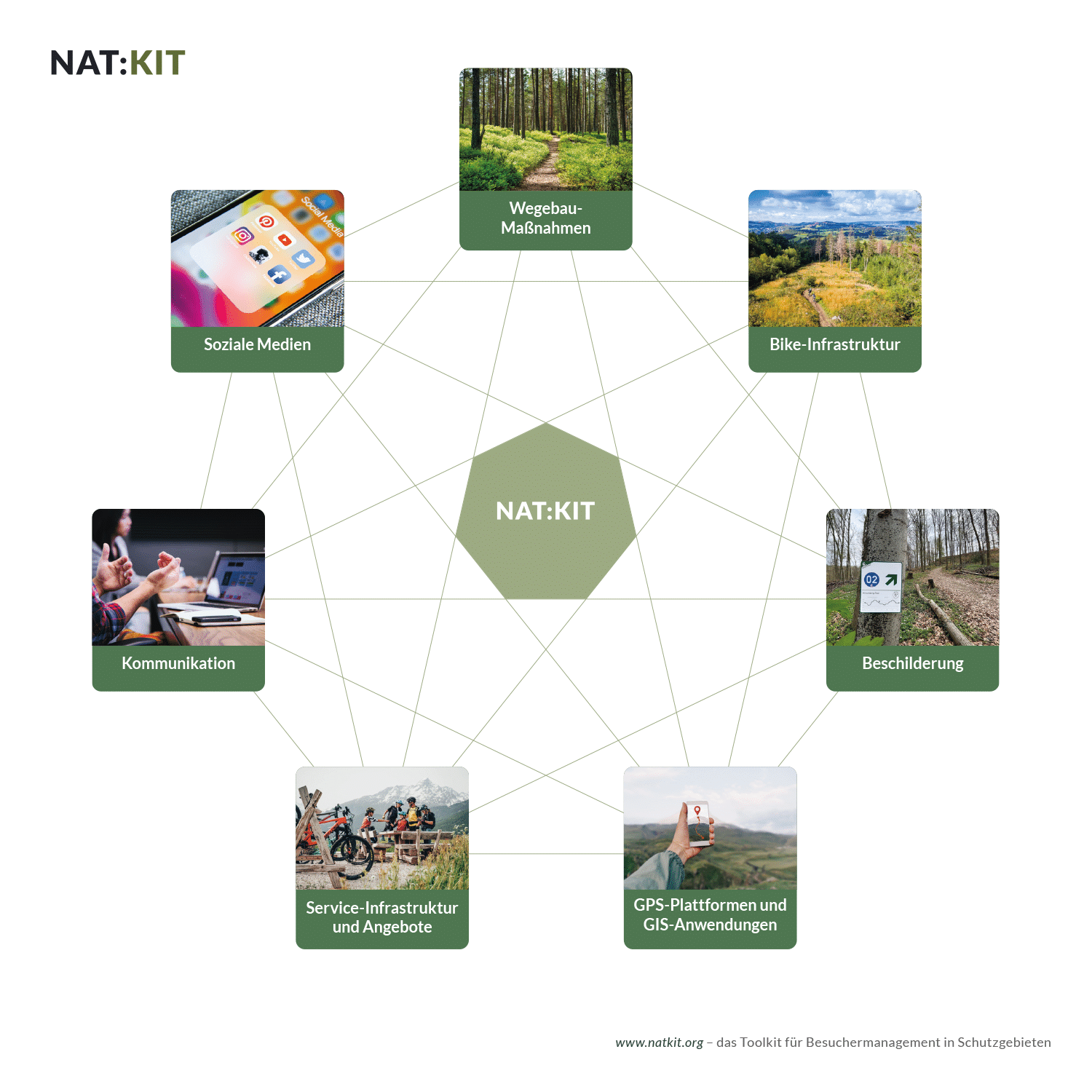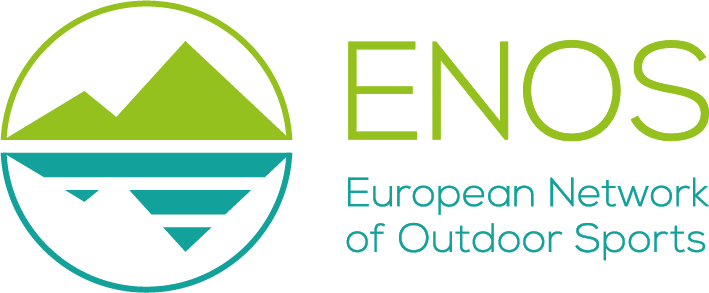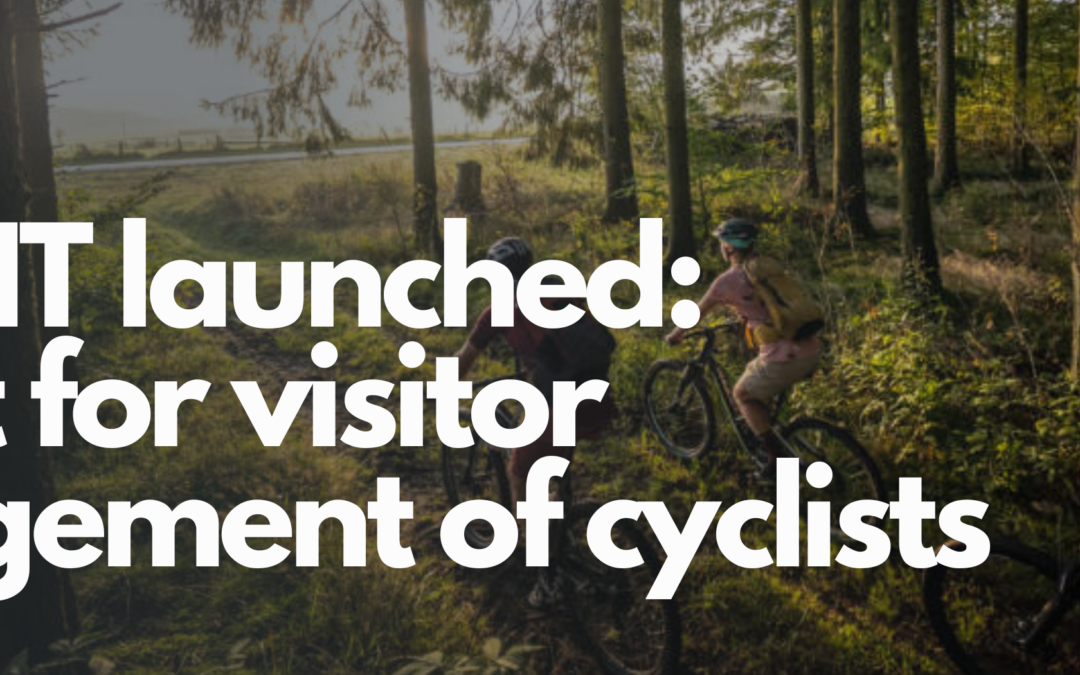The NAT:KIT project is now providing an interactive toolkit with over 100 measures and 19 in-depth knowledge contributions for managing cyclists in protected areas. Primarily designed as a self-help tool, NAT:KIT serves responsible individuals in protected areas, municipalities, and the tourism industry. The toolkit offers support in designing cycling activities and selecting and implementing measures to guide bicycle traffic in ecologically sensitive areas. Additionally, individual project guidance is available.
The modern designed digital platform www.natkit.org, along with the accompanying handbook, is the outcome of a two-year project developed in collaboration with the Mountainbike Tourismusforum Deutschland e. V. (MTF) and three protected areas in Germany. This initiative received funding from the Federal Agency for Nature Conservation (BfN) as part of the association’s support program, with resources provided by the Federal Ministry for the Environment, Nature Conservation, Nuclear Safety, and Consumer Protection (BMUV).
Focus on gravel and mountain bike target groups
The NAT:KIT project has introduced an innovative toolkit that organizes both analog and digital visitor management measures into seven categories, allowing for practical comparison based on relevant indicators. The majority of these measures are suitable for all path-bound activities in protected areas and natural landscapes. Approximately one-third of the measures specifically focus on the cycling segments of Trekking, Gravel, and Mountainbike, addressing the unique requirements of National Parks, Biosphere Reserves, and Nature Parks.
The toolkit also features informative articles in the “Knowledge & Fundamentals” section, providing insights into visitor management for recreational activities in protected areas and offering opportunities to delve deeper into related expertise. This section covers a wide range of topics, including strategic themes such as the challenges and opportunities arising from the digitalization of visitor management. Protected area managers can gain valuable insights into the mountain bike and gravel bike target groups, while tourism professionals and municipalities will gain a better understanding of the German categories of protected areas. Additionally, the (digital) communication channels of the bike community are introduced, and the demarketing strategy is explained. The content on natkit.org is regularly updated and continuously enriched with new knowledge. At the moment, the toolkit and knowledge hub is only available in German language. The project owner is looking for funding to translate the content into English.
NAT:KIT platform promotes the nationwide networking of experts
To promote the exchange and transfer of knowledge among regions and protected areas, the NAT:KIT also includes a collection of Good Practices for visitor management related to cycling and other path-bound activities. In this section, protected areas and regions not only share the successes of their projects but also the experiences they have gained during implementation. By providing personal contact information, users of the NAT:KIT are encouraged to engage in direct communication, thus building and strengthening a network of experts.
Sought-after: Additional Good Practices from protected areas, municipalities, and tourism
This is linked to the current call for protected areas and regions to submit proven Good Practices for managing cyclists in protected areas. They will be featured on www.natkit.org to further enhance networking and the exchange of experiences. Carriers of successful examples can submit them for inclusion via www.natkit.org/GP-Formular.

NAT:KIT offers practical tools and individual support
NAT:KIT marks the beginning of offering individual support to protected areas in the further development of their visitor management. The offering includes webinars, on-site workshops, as well as consultations for planning and implementing specific project initiatives.
“We designed NAT:KIT with practicality in mind. We invested significant effort in the usability of the digital toolkit. Upon request, we also provide the toolkit as a printed handbook. The advantage of the online version is the ‘Save’ function, which allows protected areas and municipalities to compile relevant content tailored to their specific region, preparing for the next working session,” explains Nico Graaff, project manager, and CEO of MTF.
In addition to the ‘Save’ function, the knowledge contribution on Stakeholder Management includes a practical guide with a PDF template for Stakeholder Mapping.
The toolkit will be presented in a free webinar on 28 September 2023 at 10 am. Interested parties are asked to register for this at www.natkit.org/#webinar.

